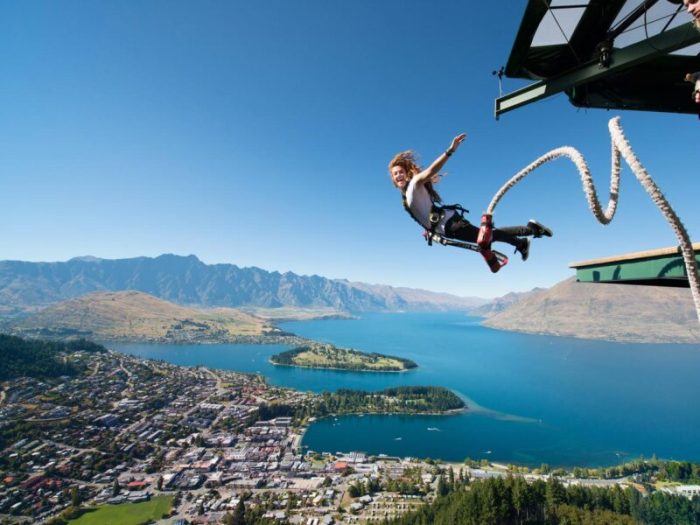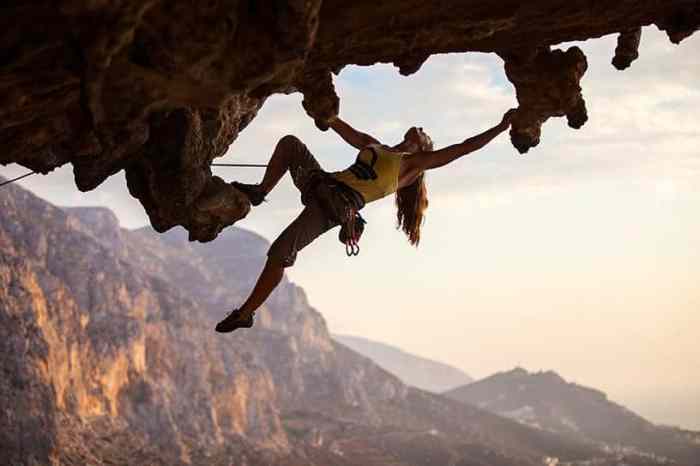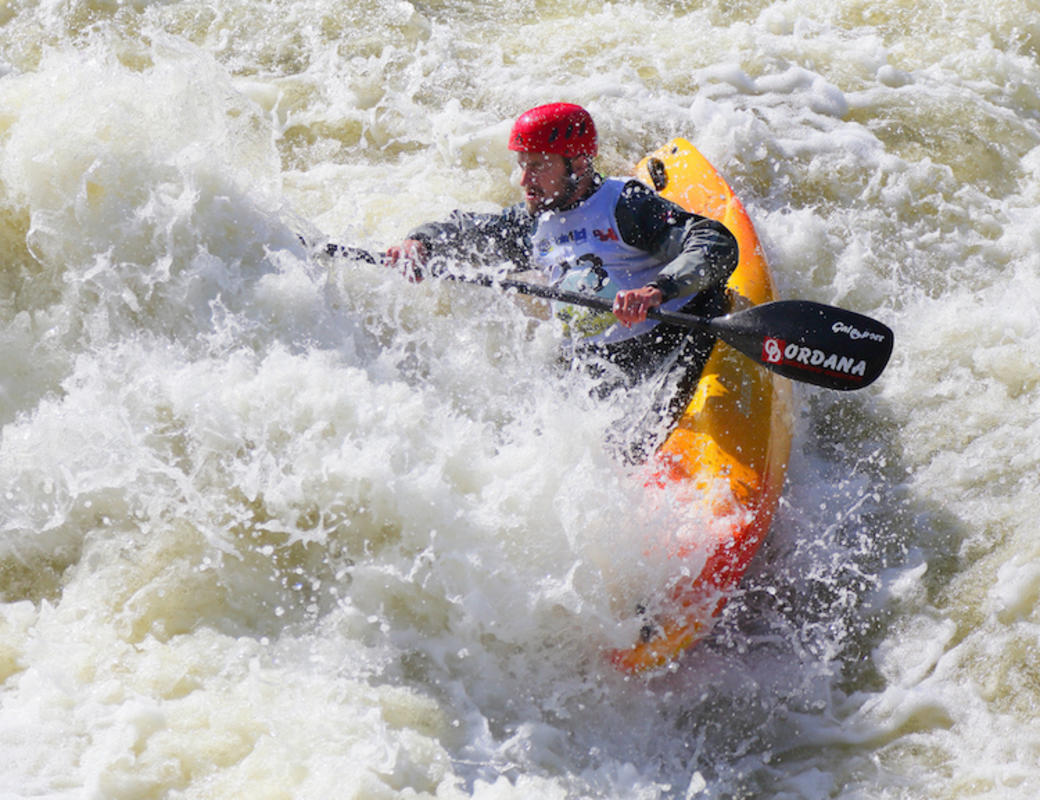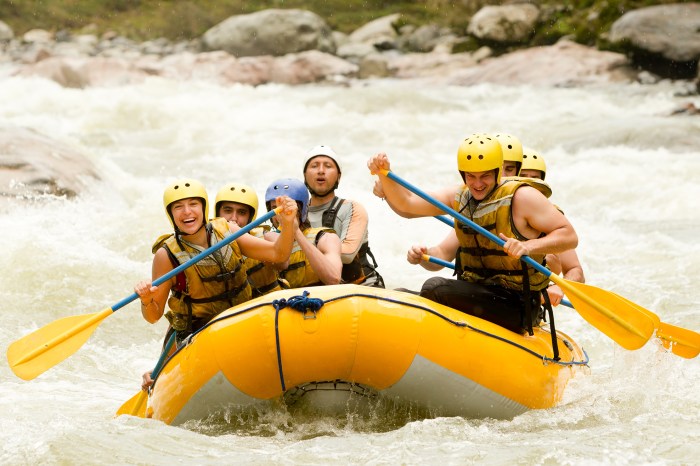Prepare yourself for an adrenaline-fueled adventure as we delve into the thrilling world of extreme sports vacations. Whether you’re a seasoned thrill-seeker or a curious adventurer, this guide will provide you with everything you need to plan and experience the ultimate extreme sports adventure.
From breathtaking destinations to safety considerations and essential gear, we’ll cover all the crucial aspects of planning an extreme sports vacation that will leave you with memories that will last a lifetime.
Extreme Sports Destinations

For adrenaline junkies and thrill-seekers, extreme sports vacations offer an exhilarating way to explore the world and push their limits. Here’s a list of top destinations that cater to the adventurous spirit, each offering unique experiences and a wide range of extreme sports:
New Zealand
New Zealand is a haven for adventure enthusiasts, with its stunning landscapes providing the perfect backdrop for activities like bungee jumping, skydiving, and white-water rafting. The country is particularly famous for its bungee jumping site at the Kawarau Gorge Suspension Bridge, where thrill-seekers can plunge 134 meters into the river below.
Switzerland
Switzerland’s towering mountains and pristine lakes make it a paradise for extreme sports enthusiasts. Interlaken, in the heart of the Swiss Alps, is a popular destination for paragliding, bungee jumping, and canyoning. The Jungfraujoch region offers some of the highest ski slopes in Europe, while the Verzasca Dam is renowned for its bungee jumping opportunities.
Nepal
Nepal is the ultimate destination for mountaineers and trekkers, with the iconic Mount Everest drawing climbers from around the globe. But beyond the Himalayas, Nepal also offers a range of other extreme sports, including paragliding, white-water rafting, and mountain biking. The Annapurna Circuit trek is a particularly popular adventure, offering stunning views and the chance to experience the local culture.
Extreme sports vacations offer a thrilling and unforgettable experience, but planning such a trip requires careful consideration. To ensure a smooth and organized adventure, consider using a travel itinerary template. This will help you map out your activities, accommodation, and transportation, ensuring that you make the most of your time while staying safe and prepared for any challenges that may arise during your extreme sports vacation.
Canada
Canada’s vast wilderness and diverse landscapes make it a top choice for extreme sports enthusiasts. Whistler Blackcomb is a world-class ski resort that also offers mountain biking, zip-lining, and bungee jumping. The Canadian Rockies provide ample opportunities for rock climbing, hiking, and white-water rafting.
Utah, USA
Utah is a hub for extreme sports, with its red rock canyons and desert landscapes providing a unique and challenging environment. Moab is a popular destination for rock climbing, mountain biking, and off-roading. The nearby Arches National Park offers breathtaking scenery and opportunities for canyoneering and hiking.
Costa Rica
Costa Rica is a nature lover’s paradise, with its lush rainforests and abundant wildlife. It’s also a top spot for extreme sports, with activities like zip-lining, white-water rafting, and surfing. The Arenal Volcano National Park offers opportunities for hiking, mountain biking, and canyoning.
Accessibility
The accessibility of these destinations varies depending on factors like travel time, cost, and visa requirements. New Zealand and Switzerland are relatively easy to reach, with direct flights from major cities worldwide. Nepal and Costa Rica are also accessible, but may require longer travel times. Canada and Utah are easily accessible for North American travelers, but may be more challenging to reach from other parts of the world.
Visa requirements also vary by destination. Citizens of most Western countries do not need a visa for short-term stays in New Zealand, Switzerland, Canada, and Utah. Nepal and Costa Rica typically require a visa, which can be obtained in advance or upon arrival.
Planning an Extreme Sports Vacation
Planning an extreme sports vacation requires meticulous preparation to ensure safety and maximize enjoyment. By following a step-by-step approach, travelers can effectively plan their adventure and mitigate potential risks.
For those seeking an adrenaline-pumping getaway, extreme sports vacations offer an unforgettable experience. However, when considering family vacations, safety and suitability become paramount. That’s why it’s essential to explore best family vacation spots that cater to both adventure and family-friendly activities.
Fortunately, many destinations combine thrilling outdoor pursuits with attractions and amenities that cater to all ages, ensuring an unforgettable extreme sports vacation for the whole family.
Choosing a Destination
Consider the desired activities, level of experience, and personal preferences when selecting a destination. Research different locations, compare their offerings, and consult with experts to find the best match.
Booking Accommodations
Secure accommodations that meet the needs of the group, considering proximity to activity sites, amenities, and budget. Consider factors such as distance from the action, availability of amenities, and reviews from previous guests.
Arranging Transportation
Plan transportation to and from the destination, as well as within the area. Consider options such as flights, rental cars, or organized transfers. Research transportation costs, availability, and reliability to ensure smooth travel.
Obtaining Necessary Gear
Acquire essential gear for the chosen activities, including protective equipment, clothing, and accessories. Ensure gear fits properly, is in good condition, and meets safety standards. Consider renting gear if necessary to avoid the hassle of transporting personal equipment.
Booking Guided Experiences
For added safety and local expertise, consider booking guided experiences through tour operators or adventure travel agencies. These professionals can provide equipment, instruction, and lead activities tailored to the group’s skill level.
Safety Considerations for Extreme Sports

Extreme sports offer an adrenaline rush and a unique opportunity to challenge yourself, but they also come with inherent risks. Taking proper safety measures is crucial to minimize these risks and ensure a safe and enjoyable experience.
Assess Your Limits
Before engaging in any extreme sport, it’s essential to honestly assess your physical abilities, skill level, and risk tolerance. Push yourself gradually, starting with activities that are within your comfort zone and gradually increasing the intensity as you gain experience and confidence.
Wear Appropriate Gear
Proper safety gear is vital for extreme sports. This includes helmets, pads, protective clothing, and specialized equipment specific to the activity you’re participating in. Ensure your gear fits properly and is in good condition before each use.
Follow Safety Instructions
Always follow the instructions and safety guidelines provided by certified guides or operators. They are trained to assess risks and provide guidance to minimize potential hazards. Never take unnecessary risks or attempt maneuvers beyond your skill level.
Choose Reputable Operators
When selecting an operator for your extreme sports adventure, choose one with a strong safety record and certified guides. Check reviews, ask for references, and ensure they adhere to industry standards and regulations.
Prepare for Emergencies
Be prepared for unexpected situations by carrying a first-aid kit, whistle, and communication device. Inform someone of your itinerary and expected return time. In case of an emergency, stay calm and follow the instructions of your guides or emergency responders.
Physical and Mental Preparation: Extreme Sports Vacations

Extreme sports demand exceptional physical and mental capabilities. Embarking on these activities without adequate preparation can lead to injury or disappointment. This section will guide you through the physical and mental demands of extreme sports and provide strategies for preparing your body and mind for the challenges ahead.
The physical demands of extreme sports vary widely depending on the activity. However, common requirements include strength, endurance, flexibility, coordination, and agility. For example, rock climbing requires upper body strength, while snowboarding demands core strength and balance.
Training Plan
To prepare for the physical challenges of your chosen extreme sport, it’s essential to develop a comprehensive training plan that includes:
- Strength training: Focus on exercises that build strength in the muscle groups required for your sport.
- Cardiovascular training: Engage in activities like running, swimming, or cycling to improve endurance and heart health.
- Flexibility training: Incorporate stretching and yoga into your routine to enhance flexibility and range of motion.
- Coordination and agility training: Practice drills that improve balance, coordination, and reaction time.
Mental preparation is equally crucial for success in extreme sports. Developing a positive mindset, managing fear, and building resilience are essential elements of mental preparation.
Mental Preparation
Cultivating a positive mindset involves:
- Setting realistic goals: Avoid setting yourself up for failure by setting achievable targets.
- Visualizing success: Imagine yourself successfully completing your extreme sport activity.
- Positive self-talk: Encourage yourself with positive affirmations and avoid negative self-criticism.
Fear is a natural response in extreme sports, but it’s important to learn to manage it effectively. Strategies for managing fear include:
- Exposure therapy: Gradually expose yourself to the fear-inducing situation in a controlled environment.
- Deep breathing exercises: Practice deep breathing techniques to calm your nerves and reduce stress.
- Meditation: Mindfulness practices can help you stay present and reduce anxiety.
Building resilience is essential for overcoming setbacks and challenges. Resilience can be developed through:
- Learning from mistakes: Analyze your mistakes and identify areas for improvement.
- Seeking support: Surround yourself with supportive individuals who encourage and motivate you.
- Maintaining a positive outlook: Even during challenging times, focus on the positive aspects of your experience.
Thorough physical and mental preparation is paramount for a successful and enjoyable extreme sports vacation. By following the guidelines Artikeld in this section, you can enhance your physical capabilities, develop a resilient mindset, and maximize your chances of a safe and rewarding experience.
Essential Gear and Equipment
Engaging in extreme sports demands appropriate gear and equipment to ensure safety, enhance performance, and maximize the overall experience. This comprehensive guide provides a detailed list of essential gear for various extreme sports, highlighting their features, benefits, and importance for each activity.
Proper Fitting and Maintenance
Properly fitted gear is crucial for both safety and performance. Ill-fitting equipment can hinder movement, reduce protection, and increase the risk of injury. Regular maintenance is equally important to ensure gear remains in optimal condition and provides reliable protection. Inspect gear regularly for any signs of wear or damage, and replace or repair as needed.
Extreme sports vacations offer adrenaline-pumping experiences, but they can also impact the environment. For those seeking an eco-conscious adventure, consider exploring sustainable travel destinations. These destinations prioritize conservation efforts, ensuring that future generations can enjoy the same thrills. By choosing sustainable extreme sports vacations, you can minimize your ecological footprint while still experiencing the exhilaration of these activities.
Choosing the Right Gear
Selecting the right gear depends on individual needs, preferences, and the specific extreme sport being pursued. Consider factors such as the environment, activity level, skill level, and personal comfort when choosing gear. Consult with experts or experienced practitioners to determine the most suitable equipment for your specific requirements.
Helmets
- Protect the head from impact and penetration injuries.
- Choose helmets that meet safety standards and provide adequate coverage.
- Ensure a snug fit without being too tight or loose.
Protective Clothing
- Shields the body from abrasions, cuts, and impacts.
- Consider materials such as Kevlar, Cordura, or leather for durability and protection.
- Choose clothing that allows for freedom of movement while providing adequate coverage.
Footwear, Extreme sports vacations
- Provides support, traction, and protection for the feet and ankles.
- Select footwear specific to the activity, considering factors such as terrain, weather conditions, and foot type.
- Ensure a comfortable and secure fit that prevents blisters and injuries.
Safety Harnesses
- Used in activities involving heights, such as rock climbing or rappelling.
- Distribute impact forces in case of a fall, preventing serious injuries.
- Choose harnesses that meet safety standards and fit snugly without restricting movement.
Ropes and Cords
- Essential for climbing, rappelling, and other activities requiring secure attachment.
- Select ropes and cords that meet safety standards and are rated for the intended use.
- Inspect ropes and cords regularly for any signs of wear or damage.
Extreme Sports Travel Insurance
Engaging in extreme sports during your vacation adds an element of thrill and adventure, but it also comes with inherent risks. To ensure your safety and financial well-being, purchasing travel insurance specifically designed for extreme sports activities is crucial.
Extreme sports travel insurance provides coverage for various scenarios that may arise during your adventure, including medical expenses, evacuation costs, and equipment loss. It acts as a safety net, giving you peace of mind and allowing you to fully immerse yourself in the experience.
Coverage Options
- Medical Expenses: Covers medical treatment, hospitalization, and emergency medical transportation in case of injuries sustained during extreme sports activities.
- Evacuation Costs: Provides coverage for transportation to the nearest medical facility or back to your home country if necessary due to an accident or illness.
- Equipment Loss: Reimburses you for the replacement or repair of damaged or lost equipment, such as skis, snowboards, or bicycles.
Choosing the Best Policy
When selecting an extreme sports travel insurance policy, it’s essential to compare different options and choose the one that best suits your individual needs. Consider the following factors:
- Coverage Limits: Determine the maximum amount of coverage you need for medical expenses, evacuation costs, and equipment loss.
- Activity Coverage: Ensure the policy covers the specific extreme sports you plan to engage in, as some policies may exclude certain high-risk activities.
- Deductibles: Choose a policy with a deductible that you are comfortable paying in case of a claim.
- Company Reputation: Research the insurance company’s reputation and track record in handling extreme sports claims.
Ethical Considerations in Extreme Sports

Extreme sports often push the boundaries of human capability and involve inherent risks. However, participants must consider the ethical implications of their actions, not only for themselves but also for others and the environment.
Responsible extreme sports enthusiasts prioritize safety, minimize environmental impact, and respect local customs. They understand the potential risks and take appropriate measures to mitigate them, such as wearing protective gear, following safety protocols, and seeking proper training. Additionally, they strive to minimize their environmental footprint by choosing sustainable practices and avoiding activities that harm natural ecosystems.
Irresponsible behaviors in extreme sports include taking unnecessary risks, disregarding safety regulations, and causing environmental damage. Participants who engage in such actions not only put themselves and others in danger but also contribute to the negative perception of extreme sports.
Respecting local customs and traditions is crucial when engaging in extreme sports in different destinations. Participants should familiarize themselves with local laws and regulations and avoid activities that may be considered disrespectful or offensive. This includes obtaining necessary permits, respecting private property, and understanding cultural sensitivities.
By prioritizing safety, minimizing environmental impact, and respecting local customs, extreme sports enthusiasts can ensure that their activities are not only thrilling but also responsible and ethical.
Ultimate Conclusion

As you embark on your extreme sports vacation, remember to prioritize safety, embrace the challenges, and immerse yourself in the local culture. Whether you’re soaring through the air, navigating treacherous waters, or conquering towering mountains, may your adventure be filled with unforgettable moments and a renewed appreciation for the limits you can push.
Commonly Asked Questions
What are the top destinations for extreme sports vacations?
Some popular destinations include Queenstown, New Zealand for bungee jumping and skydiving; Moab, Utah for mountain biking and rock climbing; and Interlaken, Switzerland for paragliding and canyoning.
How do I prepare for an extreme sports vacation?
Thorough planning is crucial. Research destinations, book accommodations, arrange transportation, and obtain necessary gear. Consider booking through tour operators for guided experiences and local expertise.
What safety precautions should I take?
Wear appropriate gear, follow safety instructions, and assess your personal limits. Choose reputable operators with a strong safety record and certified guides.